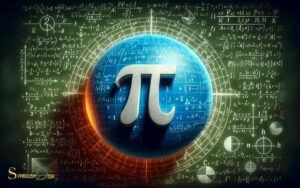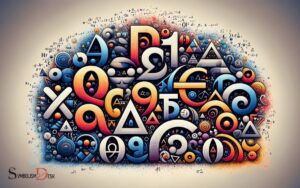At Most Symbol in Math: Explanations!
The “at most” symbol in mathematics is represented by the symbol “≤.” It is a fundamental concept used to express that one quantity is either less than or equal to another.
This symbol is prevalent in disciplines such as algebra, where it is used to define inequalities, and in probability theory, where it helps to determine the likelihood of events occurring within a certain boundary.
The “at most” symbol is essential for setting upper limits and is a key part of mathematical language and logic.
The “at most” symbol, ≤, serves as an inequality operator in mathematics. It describes a non-strict inequality, meaning that the value on the left side of the symbol is either smaller than or equal to the value on the right side.
Here’s a breakdown of its use:
- Algebra: In equations and inequalities, “x ≤ y” means x is less than or equal to y.
- Probability: It is used to describe the maximum probability of an event occurring, as in “P(X) ≤ 0.5.”
Example: If a parking lot can hold “at most” 50 cars, it means the parking lot can hold 50 cars or fewer.
Deciphering the “at most” symbol is key to understanding constraints and limits in mathematical problems.

Key Takeaway
Understanding the “At Most” Symbol in Mathematics: Definitions and Examples
| Symbol | Name | Description | Example Use Case in Algebra | Example Use Case in Probability |
|---|---|---|---|---|
| ≤ | At most | Indicates a value is less than or equal to | x ≤ 10 means x is 10 or less | P(X) ≤ 0.3 means a 30% chance or less |
| ≥ | At least | Indicates a value is greater than or equal to | y ≥ 5 means y is 5 or more | P(Y) ≥ 0.7 means a 70% chance or more |
| < | Less than | Indicates a value is strictly less than | z < 8 means z is less than 8 | P(Z) < 0.2 means less than 20% chance |
| > | Greater than | Indicates a value is strictly greater than | a > 15 means a is more than 15 | P(A) > 0.5 means more than 50% chance |
Understanding the At Most Symbol
The concept of the ‘at most’ symbol in mathematics represents a crucial notion for understanding the constraints and limitations within a given mathematical context. Denoted by the symbol ≤, it signifies that a value cannot exceed a certain limit.
For example, if we say that x is less than or equal to 5 (x ≤ 5), it means that the value of x cannot surpass 5. This concept is fundamental in various mathematical fields, including algebra, calculus, and optimization problems.
Understanding the ‘at most’ symbol is essential for interpreting mathematical inequalities and defining boundaries within which solutions or variables must operate.
It provides a clear framework for setting limits and defining the maximum allowable values in a wide array of mathematical equations and problems.
Notation and Meaning of ’At Most
To understand the notation and meaning of ‘at most’ in mathematics, it is important to grasp the implications of the symbol ≤ and its role in establishing constraints within mathematical contexts.
The symbol ≤ represents ‘less than or equal to,’ denoting that a value is either less than or equal to another value. When we say “x is at most 5,” it means x can take any value less than or equal to 5.
This notation sets a boundary, allowing for values up to and including the specified limit. In practical terms, if we have a set of numbers and we want to identify those that are at most a certain value.
We would include the numbers equal to that value as well as any numbers less than it. This understanding is fundamental in various mathematical disciplines. These numbers are critical when working with intervals and inequalities, as they help define the range of possible solutions. Additionally, the concept extends to different types of numbers, such as rational and irrational numbers, each playing an important role in mathematical theory. For instance, the symbol for irrational numbers in math represents values that cannot be expressed as a simple fraction, showcasing the depth and complexity of mathematical exploration.
Examples of At Most in Equations
Examples of at most in equations can be found in various mathematical problems, illustrating the application of the ≤ symbol to establish constraints on values within the equations.
For instance, consider the equation 3x ≤ 15. This equation signifies that the value of 3x cannot exceed 15, allowing for a maximum value of 5 for x. In another example, if 2y + 4 ≤ 10, it implies that the sum of 2y and 4 cannot surpass 10, thus y must be less than or equal to 3.
These examples demonstrate how the at most symbol (≤) is used in equations to define upper limits for variables, providing valuable insights into solving real-world problems and optimizing various mathematical models.
At Most Vs. at Least: Key Differences
How do ‘at most’ and ‘at least’ differ in mathematical equations and their implications? In mathematical equations, ‘at most’ implies a maximum limit, indicating that a value cannot exceed a certain threshold.
For example, if a problem states that a certain quantity can have at most 5 units, it means the quantity cannot exceed 5.
On the other hand, ‘at least’ indicates a minimum limit, signifying that a value cannot fall below a specified threshold. For instance, if a condition specifies that at least 3 items are required, it means that the quantity must be 3 or more.
Understanding these differences is crucial in interpreting and solving mathematical problems accurately, as they dictate the range of possible values and constraints within a given context.
Applications of At Most in Probability
Applications of at most in probability’s practical use can be seen in determining the maximum number of successful outcomes in a given event. This concept is widely used in various real-life scenarios to make informed decisions based on the likelihood of certain outcomes.
For example:
- Calculating the maximum number of defective items in a batch during quality control checks.
- Determining the highest number of successful drug trials in a clinical study.
- Estimating the maximum number of faulty components in a manufacturing process.
- Assessing the upper limit of successful attempts in a series of independent experiments.
In each of these cases, understanding the concept of “at most” in probability enables individuals to make reliable predictions and manage risks effectively.
Solving Problems Using At Most Notation
One may employ at most notation to effectively solve various mathematical problems, providing a precise approach to determining maximum outcomes within a given context.
When faced with problems such as determining the maximum number of successes or failures within a specific scenario, at most notation offers a clear and concise method for calculation.
By using the at most symbol, which is represented by the inequality ≤, one can establish the upper limit of a certain event’s occurrences. This notation proves particularly useful in probability calculations, decision-making processes, and optimization models.
For instance, in a real-world context, at most notation can be utilized to analyze the maximum number of defective items in a production batch, helping to make informed decisions and manage resources effectively.
At Most in Set Theory
The concept of ‘at most’ in set theory refers to the maximum number of elements that a set can contain. This concept is fundamental to understanding the limitations and constraints within sets.
Key points to consider include:
- ‘At most’ denotes an upper limit on the number of elements in a set.
- It is represented using the less than or equal to symbol, ≤, in mathematical notation.
- The cardinality of a set, denoted as |S|, can be used to determine the maximum number of elements it contains.
- Understanding ‘at most’ is crucial for defining finite sets and establishing constraints within various mathematical contexts.
These principles play a crucial role in set theory, providing a foundation for more advanced concepts in mathematics.
Advanced Concepts: At Most in Calculus
The concept of “at most” in calculus involves examining the behavior of functions as they approach certain points. In calculus, determining the limit at most can help analyze the maximum or minimum values a function can reach.
Understanding the application of “at most” in calculus is crucial for solving complex problems and making precise calculations.
Limit at Most
Discussing the concept of ‘Limit at Most’ in calculus involves examining the maximum value that a function approaches as the independent variable approaches a specific value.
This concept is crucial in understanding the behavior of functions and their values as they approach certain points.
Key points to consider when exploring ‘Limit at Most’ include:
- Understanding the behavior of a function as it approaches a specific value
- Determining the maximum value that a function can reach as it approaches the given point
- Utilizing mathematical tools such as limits, derivatives, and continuity to analyze ‘Limit at Most’
- Exploring real-world applications of ‘Limit at Most’ in fields such as physics, engineering, and economics
Calculus Applications
An essential concept in calculus, the application of ‘At Most’ involves analyzing the maximum values that functions approach as the independent variable nears a specific value.
This concept is crucial in understanding the behavior of functions and is widely used in various real-world applications.
To illustrate this, consider the following table:
| Function | Maximum Value as x approaches a specific value |
|---|---|
| f(x) | at most M |
| g(x) | at most N |
| h(x) | at most P |
| k(x) | at most Q |
| l(x) | at most R |
In each case, as the independent variable approaches a specific value, the function’s maximum value is determined. This understanding is fundamental in various advanced calculus concepts and real-world problem-solving.
Conclusion
The at most symbol in math represents a crucial concept in various mathematical fields. Its notation and meaning, as well as its application in probability, set theory, and calculus, make it an essential tool for solving mathematical problems. In probability, the at most symbol is often used to represent the cumulative distribution function, which calculates the probability of a value being less than or equal to a certain number. In set theory, it is used to denote a maximum value within a set. In calculus, the at most symbol is used to describe the behavior of a function as it approaches a certain value. Overall, exploring math symbols such as the at most symbol can provide valuable insight into the principles of mathematics and their applications in various fields.
Understanding the differences between at most and at least is also important for accurate mathematical analysis. Like a key that unlocks a door, the at most symbol opens the door to solving complex mathematical equations and problems.






